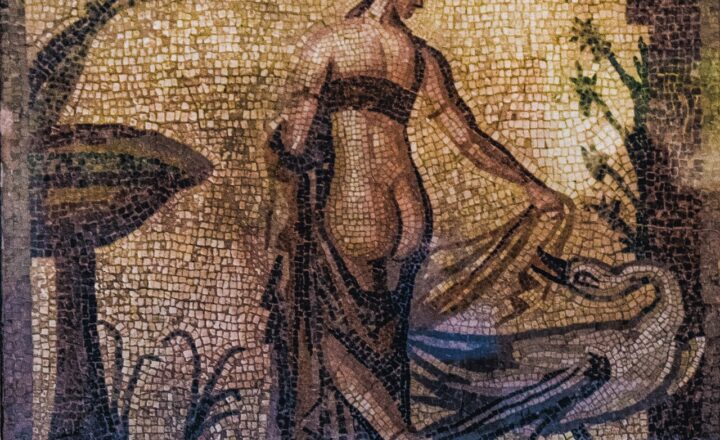The Ancient City of Babylon: Wonders, Myths, and Lost History
November 15, 2024

The ancient city of Babylon has captivated the imagination of historians, archaeologists, and travelers for centuries. Its legendary Hanging Gardens, immense ziggurats, and association with powerful empires place it among the most significant cities of antiquity. Much of what we know about Babylon comes from historical records, archaeological discoveries, and myths that have woven a tapestry of wonder around this remarkable place. In this article, we will explore the wonders, myths, and lost history of Babylon, shedding light on its significance in the ancient world and its enduring legacy.
1. A Brief Historical Overview of Babylon
Founded in 2300 BC, Babylon grew from a small Akkadian town to the capital of one of the most powerful empires in history. The city is located near the Euphrates River in present-day Iraq and served as a cultural, commercial, and political hub. Its location made it a center for trade routes, leading to its prosperity.
The city reached its golden age under Hammurabi (1792–1750 BC), renowned for his codification of laws, known as the Code of Hammurabi, one of the earliest written legal systems. Under the rule of Nebuchadnezzar II (605–562 BC), Babylon reached new heights, with monumental architectural projects transforming the city into a dazzling marvel.
As the empire weakened, Babylon fell under the control of the Persian Empire and later the Greeks, diminishing its prominence until its eventual abandonment.
2. Architectural Wonders of Babylon
Babylon was home to several architectural wonders that embodied the might and creativity of its people. Among these, the most celebrated was the ziggurat dedicated to Marduk, known as Etemenanki. This massive stepped structure, believed to inspire the biblical Tower of Babel narrative, stood approximately 91 meters tall, showcasing the engineering prowess of the Babylonians.
The Hanging Gardens
Perhaps the most famous of Babylon’s wonders is the fabled Hanging Gardens, often attributed to Nebuchadnezzar II. Ancient texts claim they were constructed to please his wife, Amytis, who longed for the green hills of her homeland. Descriptions portray an extraordinary feat of engineering involving a series of terraces filled with trees and plants, allegedly creating a lush, suspended paradise in the arid landscape.
However, the existence of the Hanging Gardens remains a topic of debate among historians and archaeologists. Some argue they may have been located in Nineveh rather than Babylon, or even that they existed only in legend.
3. Myths and Legends of Babylon
Babylon’s rich storytelling tradition birthed many myths that defined its cultural identity. The epic of Gilgamesh, one of the oldest known stories, originates from this region. This epic recounts the adventures of Gilgamesh, part divine, part human, and explores profound themes of friendship, civilization, and the quest for immortality.
Additionally, Babylonian mythology features a plethora of gods and goddesses, with Marduk reigning supreme as the city’s patron deity. The Enuma Elish, the Babylonian creation myth, portrays Marduk defeating the primordial chaos monster, Tiamat, thus establishing order in the universe. Marduk’s triumph embodies the Babylonians’ belief in the importance of civilization and an ordered society.
The myths surrounding Babylon not only highlight its religious beliefs but also symbolize the struggles and aspirations of its people as they navigated the challenges of existence.
4. The Legacy of Babylon: Influence on Later Cultures
The influence of Babylon transcends time, extending its reach to later civilizations. The concepts of law and governance espoused by Hammurabi have echoed through history, influencing legal systems worldwide. The innovations in mathematics, astronomy, and literature cultivated in Babylon laid foundational stones for subsequent cultures, particularly the Greeks.
The city’s tales and architectural style also inspired later empires, including the Assyrians and Persians. The rich tapestry of Babylonian culture, from art to the written word, acted as a bridge connecting ancient civilizations with future generations, emphasizing the city’s lasting significance.
5. Archaeological Discoveries: Uncovering Babylon’s Lost History
Modern archaeological efforts have unearthed significant artifacts that provide insights into Babylon’s past. Excavations, particularly those initiated in the 19th century by archaeologists like Robert Koldewey, revealed substantial remains of the ancient city, including the Ishtar Gate, adorned with glazed bricks depicting dragons and bulls, symbolizing Marduk and the goddess Ishtar.
These discoveries have unveiled aspects of Babylonian daily life, architecture, and spirituality. Artifacts such as cylinder seals, pottery, and tablets highlight the city’s role in trade and craftsmanship. They also uncover personal stories, religion, and the socio-political dynamics of Babylon, creating a more nuanced understanding of its history beyond myths and legends.
6. The Symbolism of Babylon in Modern Culture
Babylon’s story resonates deeply within modern culture, often symbolizing the juxtaposition of human achievement and moral decay. The term “Babylon” has come to represent various meanings across literature, art, and music. It evokes images of grandeur intertwined with tragedy and serves as a metaphor for the rise and fall of civilizations.
Additionally, Babylon often appears in religious texts, particularly in the Bible, serving as a representation of excess and dissipation. This duality continues to fascinate artists and writers, who draw inspiration from Babylon’s legacy to explore themes of ambition, hubris, and the cyclical nature of history.
Conclusion: The Enduring Allure of Babylon
The ancient city of Babylon remains a testament to human creativity, ambition, and the complexities of civilization. Its wonders, interwoven with myths and lost histories, tell a story of an extraordinary culture that shaped the course of history. As archaeologists continue to uncover its secrets, Babylon’s legacy serves as a powerful reminder of our shared humanity and the timeless quest for knowledge and understanding.
If you are intrigued by the riches of ancient civilizations and the stories that have shaped our world, Babylon offers a tantalizing glimpse into a past that continues to inspire and educate us today.







